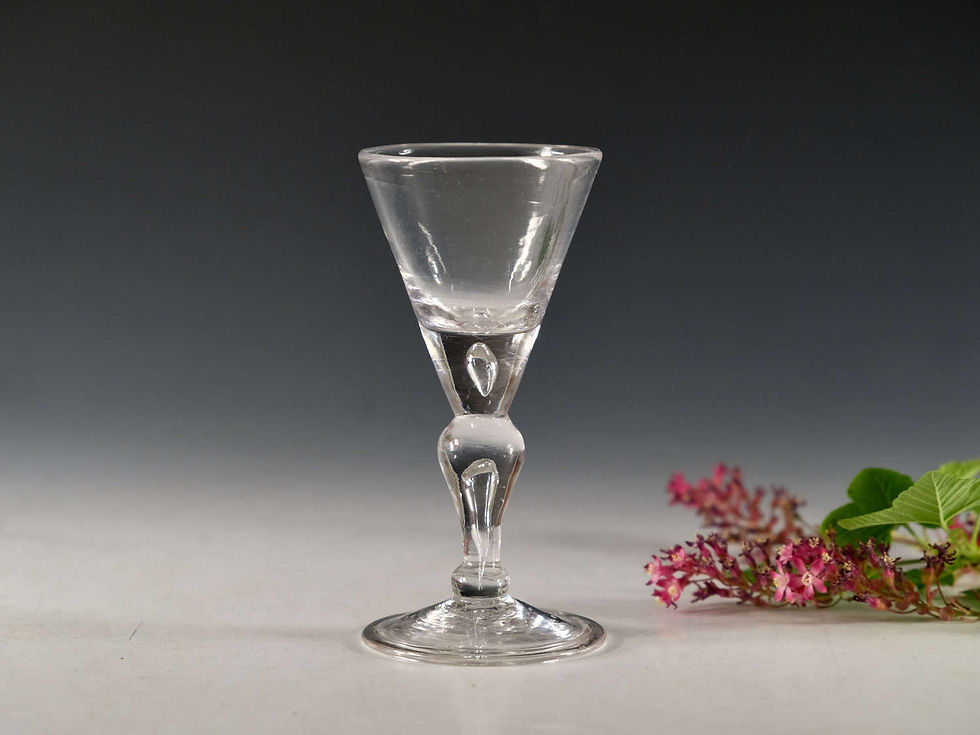BALUSTER GLASSES
- JAGRAT GLASS
- Jul 18
- 1 min read
What makes a wine glass… noble?
Between 1685–1725, glassmakers in England produced what would become one of the most enduring silhouettes in glass history: the baluster.
Heavy. Commanding. Almost architectural.
These thick-stemmed goblets and wine glasses were made of colourless lead glass, sometimes plain, sometimes with a delicate "tear" suspended in the bowl’s base — a poetic flaw by design.
While most commonly seen in wine goblets, baluster stems also found their way onto ale, gin, and cordial glasses, often featuring:
Folded or domed feet (post-1690)
Subtle shaping variations — with at least 9 distinct knop types
The inverted baluster, with a signature bulge at the top
The true baluster form lives on in art, too — see the “Kit-Cat glasses” immortalized in the paintings of Sir Godfrey Kneller (National Portrait Gallery, London).

At Jagrat Glass, we study forms like these not just out of nostalgia, but also out of respect for proportion, symbolism, and legacy — values that still matter in modern tableware and luxury branding today.
Because every shape tells a story.
#JagratGlass #BalusterGlass #GlassHistory #LuxuryGlassware #MadeInIndia #ThoughtLeadership #KitCatGlass #HoReCaDesign #CraftsmanshipMatters #GlassWithPurpose





Comments